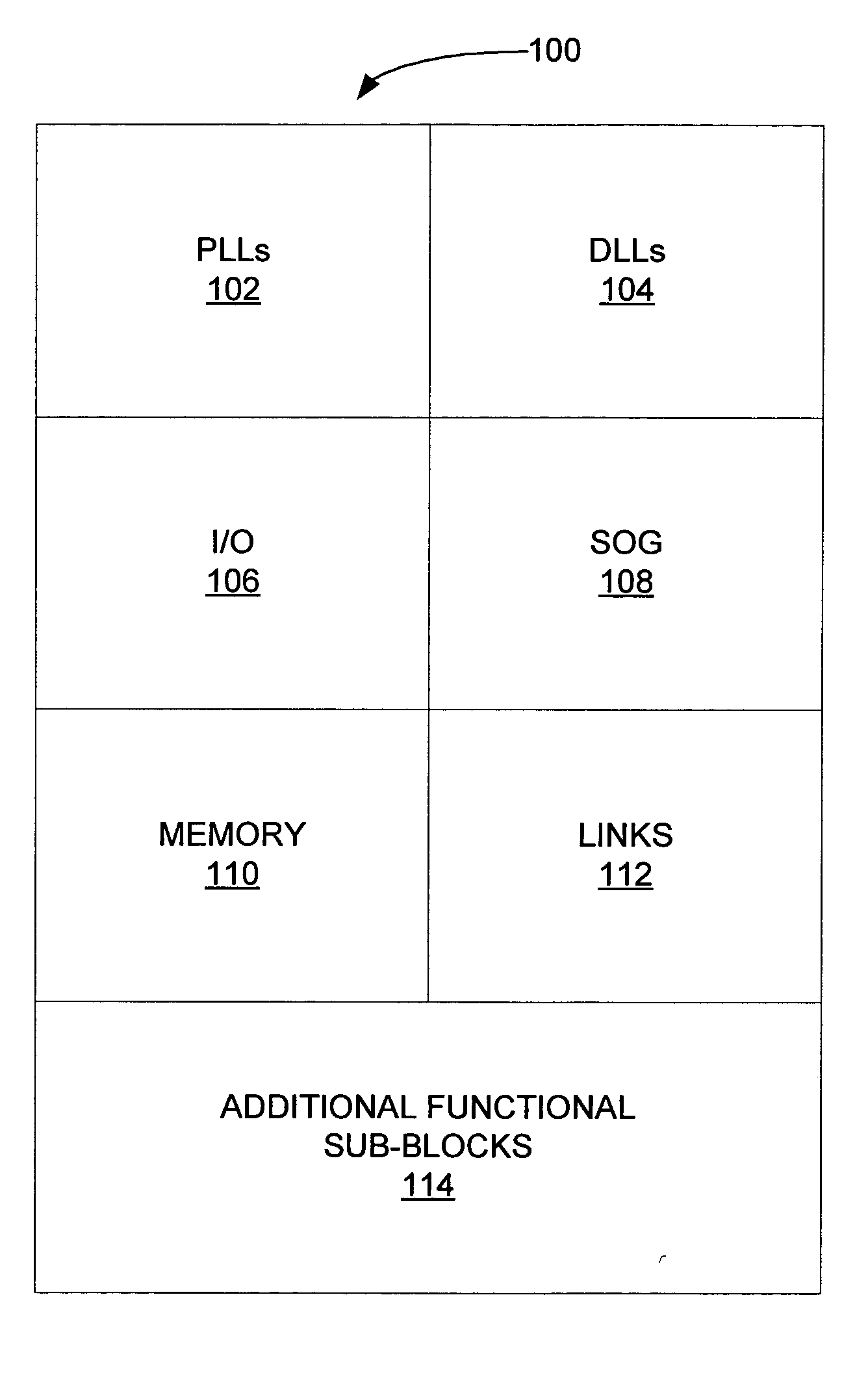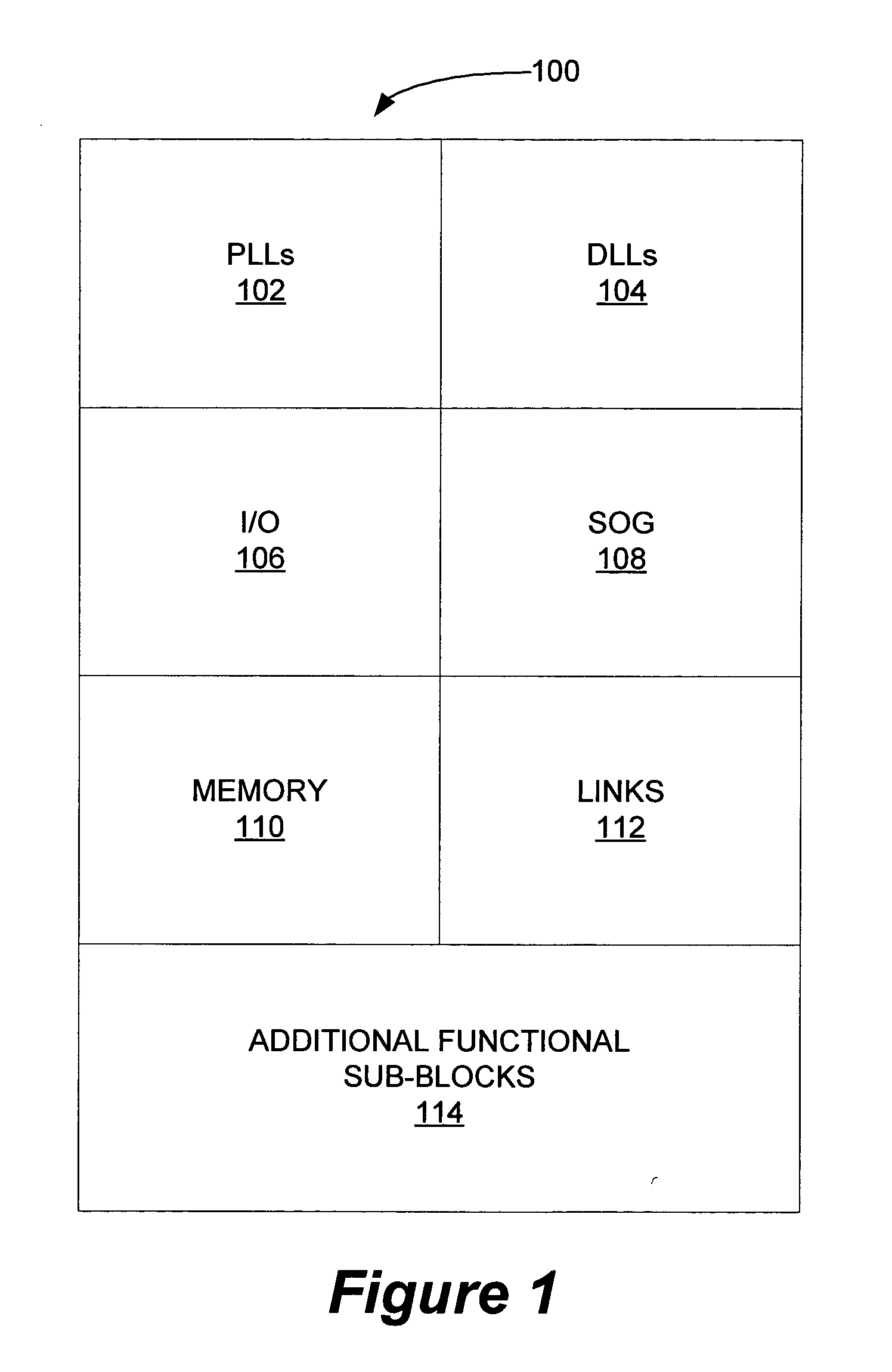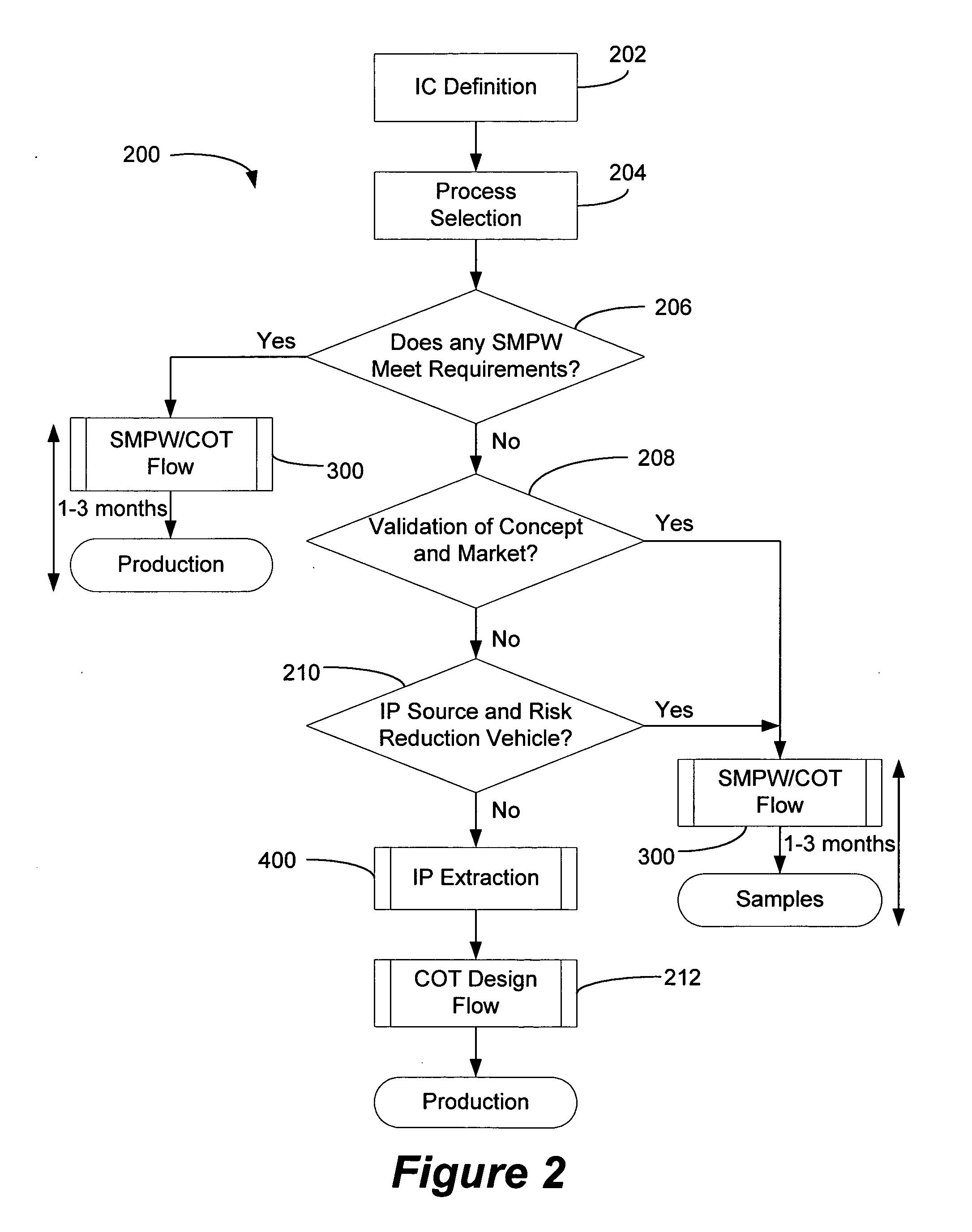Method and architecture for integrated circuit design and manufacture
a technology of integrated circuits and manufacturing methods, applied in the field of integrated circuit design and manufacture, can solve the problems of increasing complexity of chips, increasing cost and risk, and requiring higher performance, so as to achieve cost reduction, cost reduction, and cost reduction
- Summary
- Abstract
- Description
- Claims
- Application Information
AI Technical Summary
Benefits of technology
Problems solved by technology
Method used
Image
Examples
Embodiment Construction
[0047] The present invention provides a revolutionary approach to the cost and risk issues surrounding complex IC design and manufacture—a structural multi-project wafer (SMPW). The inventive SMPW comprises multiple pre-manufactured and pre-validated sub-blocks. Each sub-block is targeted to a specific application, function or interface.
[0048] Presently, major fabrication houses provide multi-project wafers (MPWs or shuttles) as test vehicles to their customer base, in which the cost of manufacturing is shared among multiple users, significantly reducing customer manufacturing cost. MPWs or shuttles are used primarily for early system verification or as risk reduction vehicles. The SMPW of the present invention, by contrast, comprises pre-defined structures that are pre-fabricated to the contact level and allows for customization for specific applications. Relative to MPWs, SMPW fabrication time is significantly reduced because they are pre-manufactured to the contact level.
[0049]...
PUM
 Login to View More
Login to View More Abstract
Description
Claims
Application Information
 Login to View More
Login to View More - R&D
- Intellectual Property
- Life Sciences
- Materials
- Tech Scout
- Unparalleled Data Quality
- Higher Quality Content
- 60% Fewer Hallucinations
Browse by: Latest US Patents, China's latest patents, Technical Efficacy Thesaurus, Application Domain, Technology Topic, Popular Technical Reports.
© 2025 PatSnap. All rights reserved.Legal|Privacy policy|Modern Slavery Act Transparency Statement|Sitemap|About US| Contact US: help@patsnap.com



